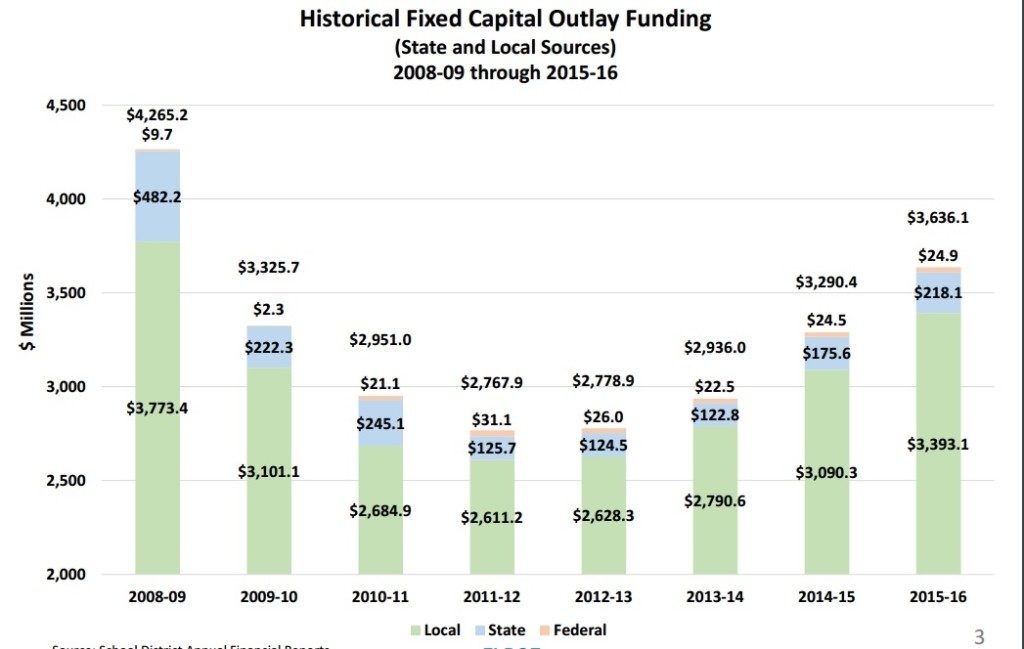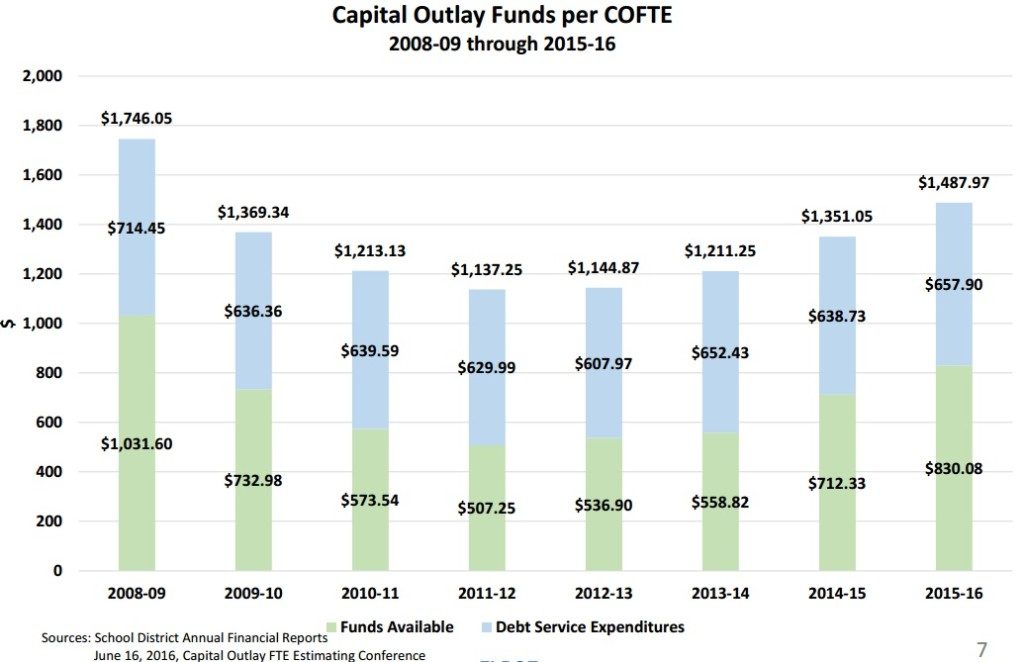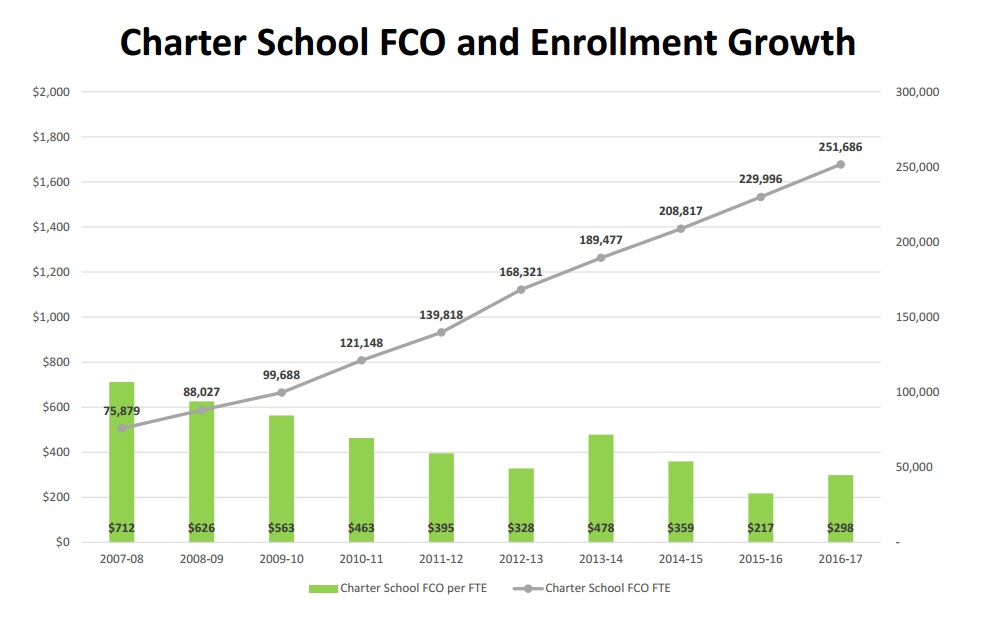Later this morning, the Florida Senate’s education budget panel is set to take up one of our favorite topics: School facilities funding.
It’s one of our favorite topics because it’s often misconstrued.
And it’s become an increasingly important, and fraught, issue for the state’s 653 charter schools. Over the years, they have watched their funding erode, faced constant uncertainty while relying on annual appropriations from the Legislature to pay for buildings, and, ironically, faced accusations that they are the ones getting lavish treatment from lawmakers while their district counterparts get short-changed.
The state Department of Education has prepared a series of charts that shed light on this issue.
The reality is that in the years since the Great Recession, facilities funding has been no picnic for districts or charters.
For starters, facilities funding still hasn’t returned to pre-recession levels.

Look at funding per student, and the story is largely the same.

Charter schools have relied on the same $75 million in state facilities funding for the past several yeas. As more students enroll in charter schools, funding has eroded. (It’s also worth noting how the per-pupil funding amounts in this graph for charter schools compare to the per-pupil totals in the first chart.)

Technically, schools spend their capital outlay funding on long-term expenses other than buildings, like buses and equipment.
Sen. David Simmons, R-Altamonte Springs, chairs the education budget panel, and has already unveiled proposals that would address this situation for districts and charters alike. We’ll see what his colleagues, and representatives from district and charter schools, have to say about them.


